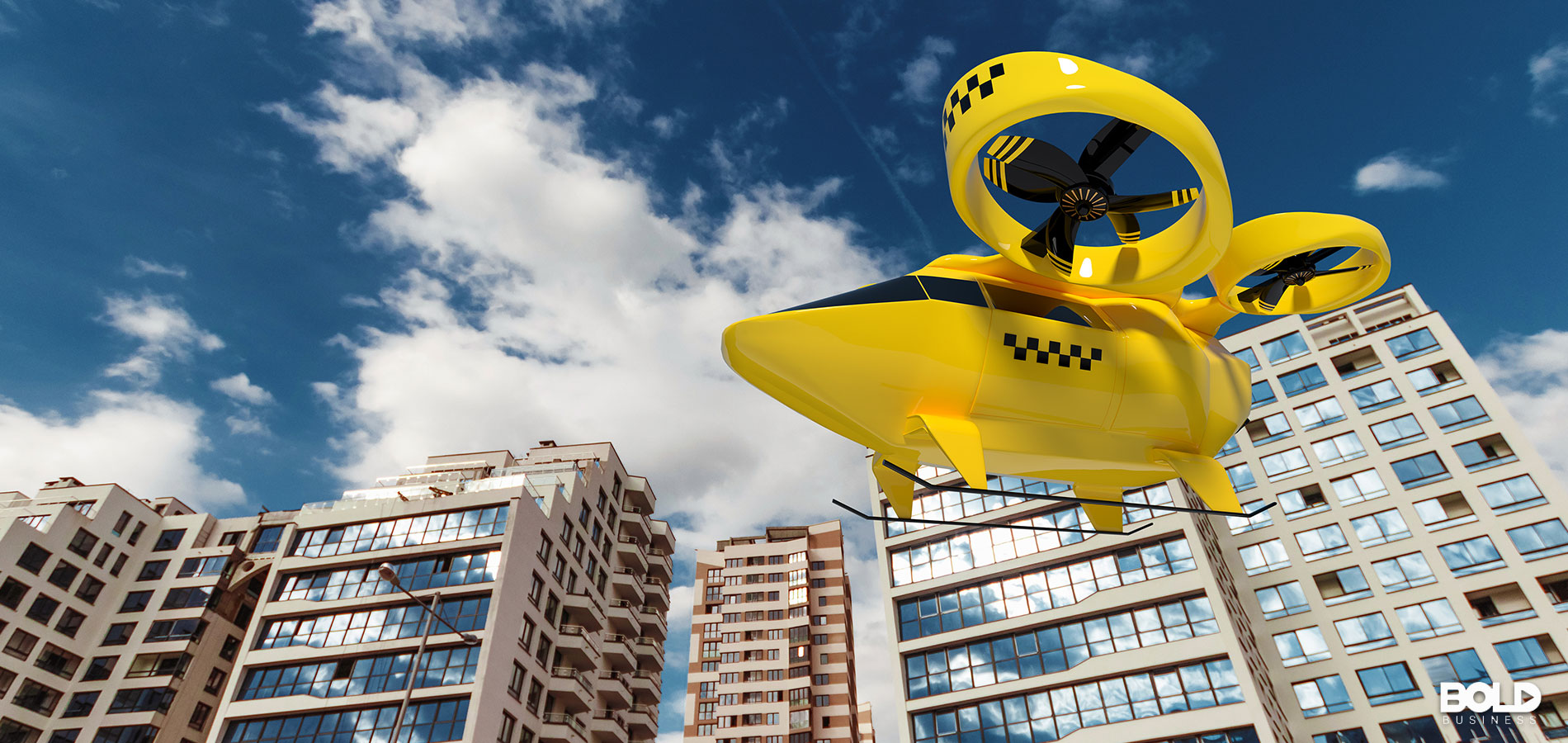It wasn’t that long ago that many cities were taken by surprise with the introduction of e-bikes and e-scooters. Uber, Lyft, and other companies introduced these new forms of end-of-trip transportation in major cities throughout the country. Being unprepared, however, many urban areas struggled with how to best manage these vehicles. Not only did e-bikes and scooters pose new challenges in sharing roadways and sidewalks. But they also created problems with parking and storage. As a result, cities vowed to never again be caught so off-guard should new transportation infrastructure be needed. And now that time has once again come in the form of air taxis.
Several companies are on the verge of introducing air taxi transportation into major metropolitan areas. (Read more about the rise of air taxi transportation–no pun intended–in this Bold story.) Once they receive approval from the FAA, cities will need to decide how to best deal with them. Unlike e-bikes and e-scooters, air taxis demand much greater attention in terms of new transportation infrastructure. That’s why some cities are already beginning the planning process. But while some anticipate what’s to come, others have yet to even consider such changes. Thus, for many cities, the chaos and confusion experienced with past forms of new transportation may resurface. Understanding this, it would be wise for urban planners to act now before they find themselves behind the curve.
“If you want to build new infrastructure on the ground [for air taxis], this is obviously a municipal and a city question. The way you want to use that, the access to that, the permitting, those are all municipal [issues].” – Greg Bowles, Head of Government Affairs, Joby Aviation
Air Taxis and New Transportation Infrastructure
When it comes to air taxis, their presence in major cities will represent a notable shift in transportation options. These vehicles will require a completely new transportation infrastructure in order to function. This not only includes vertiports, where air taxis will take-off and land. But it will include many other considerations as well. Unlike e-bikes and scooters which utilized roads and sidewalks, these new vehicles will take to the air. And without proper municipal planning, this could quickly become a nightmare. With this in mind, the following are major areas that some cities are already evaluating.
- Placement of Vertiports – Notably, air taxis will require specific sites where passengers will board, take-off, and land. Many current air taxi companies are working with REEF Technologies to secure such sites on top of existing parking garages. But for cities, this isn’t necessarily a solution without issues. Traffic to and from these areas, accessibility, and parking must be evaluated as well. Without new transportation infrastructure considerations, air taxis could worsen traffic rather than improve it.
- Noise Control – While air taxis are generally quieter than cars or jets, they nonetheless do have some associated noise. Because they are airborne, this noise also has a greater propensity to travel. Therefore, any new transportation infrastructure for these vehicles must take this into consideration. Choosing routes and vertiports accordingly will play a major role in planning efforts as well.
- Zoning Issues – For municipalities, zoning issues are common whenever a new transportation infrastructure is proposed. In the case of air taxis, decisions must be made about zoning in relation to other transportation options. Do cities mirror current usage for other ride-sharing services? Or do they develop a more comprehensive regional network to complement other forms of transportation in place? These decisions as well as the impact air taxis have on residential areas are important aspects to consider.
- Air Traffic and Route Planning – Lastly, any new transportation infrastructure involving air taxis must address air traffic. Routes must be determined for these vehicles along with their impact on airplane travel. This could also affect other choices such as those related to drones and unmanned aerial vehicles. While some of this will fall on the FAA, cities will also need to be involved in these determinations.
“When we think about vertiports in the future, it’s going to be really a combination of who provides the capital to build and operate that vertiport, and a conversation with the city as far as who can access those vertiports and what the pros and cons might be to a community, of having open-access vertiports versus not open access.” – Andrew Cummins, Head of Business Development, Archer Aviation
Equity and Accessibility Issues to Consider
In addition to new transportation infrastructure issues, cities are also thinking about access and equity related to air taxis. Different options exist with some suggesting individual private vertiports for each air taxi carrier. Others believe a shared vertiport among all air taxi carriers would be more ideal. The underlying concern is that the new transportation infrastructure should accommodate all residents and offer easy access. Ultimately, this comes down to funding issues of vertiports and related infrastructures. Depending on whether private or public funding is used, or both, different preferences might exist.

For companies on the forefront of air taxi transportation, the general consensus is that shared vertiports are preferred. These companies believes this is not only advantageous from a cost perspective. But likewise, they feel this will advance the technology more rapidly. If this approach is pursued, it will be much easier for cities to create broad accessibility to air taxis. And as a result, this could benefit entire municipal transportation networks more completely. But unless these issues are addressed up front, these types of benefits may be poorly realized.
“I think the reality is that these vehicles are coming, and we really want to do everything we can to plan for it but stay out of the hype cycle.” – Sam Morrissey, Executive Director, Urban Movement Labs, Los Angeles
Pursuing a Collaboration Among Stakeholders
While only a handful of cities are planning for the future of air taxis, their approach is worth noting. In Los Angeles, a nonprofit organization named Urban Movement Labs was formed to address new transportation infrastructure issues. They have since worked with private, government, and resident groups in an effort to plan for the future more effectively. This type of proactive approach has helped raise awareness about key transportation concerns. And it has also encouraged collaborative solutions in the process. While the reality of air taxis are still a few years away, cities like Los Angeles see the writing on the wall. In this regard, other municipalities should take notice and perhaps begin their own planning process as well.









